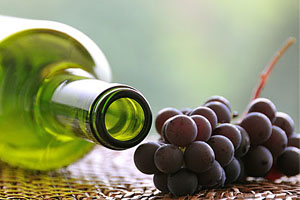Home > News and Events > Pinot Noir Study Says Wine Production Methods Affect Color and Taste
Pinot Noir Study Says Wine Production Methods Affect Color and Taste
Sunday, April 28, 2019
A new study published in Analytical Chemistry Research has shown that production methods for wine can affect the color and taste of Pinot Noir. The research, entitled “Evaluation of organic and inorganic compounds levels of red wines processed from Pinot Noir grapes”,analyzes eight Pinot Noir wines from regions including the USA, France, New Zealand, and Chile.
Dr. HeiliSirén and her colleagues studied the chemical profiles for each kind of wine and discovered that each profile was different. "We're interested in winemaking processes and wanted to compare them by looking at high quality wines," said Sirén. "Pinot Noir crops are demanding to harvest - the yield differs depending on the year. All the winemakers that produce Pinot Noir start with the same thing - grapes - and end up with very different products. We wanted to find out what causes those differences."
According to their study, winemakers include sucrose and other chemicals during the manufacturing process, therefore producing Pinot Noir wines with different chemical profiles. To determine which sugars were added during processing, the researchers utilized methods such as capillary electrophoresis, liquid chromatography, and spectrometry to observe carbohydrates, organic acids, aldehydes, anthocyanins, phenolic compounds, inorganic anions, and metals within each sample. Additionally, they were able to identify whether or notsulphur dioxide, which is used for the prevention of wine oxidation, waspresent.
Dr. Sirén and her team were able to conclude that each wine was created with different processes including natural fermentation, biodynamic fermentation, micro-oxygenation, and cold fermentation. The results showed that using newer processes such as biodynamic and micro-oxygenation fermentation produced wines with the lowest organic compound levels.
Micro-oxygenation was also observed to reduce levels of anthocyanin, the red-blue pigment which comes from grapes. The wines made through this process was found to have the highest sugar content, meaning winemakers did not need to add sugars with this process.
According to Dr. Sirén, the most notable findings were from the New Zealand wine sample, which contained no plant acids. However, the sample also showed the highest amounts of acetic, malic, and lactic acids, as well as acetaldehyde, making it the most acidic and alcoholic of the eight profiles.
To ensure that experiments produce precise and accurate results, researchers should use only the highest-quality instruments and supplies. Andwin Scientific provides over a million lab equipment and supplies for various applications including capillary electrophoresis, liquid chromatography, and spectrometry. To view our extensive list of products, visit http://andwinsci.com/categories.php today.















